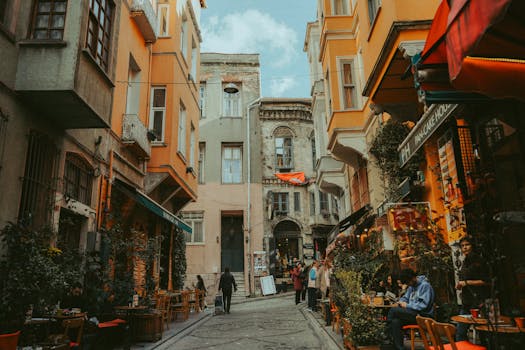
Traveling Through Time: How Europe’s Historical Heritage Shapes Modern Lifestyles in 2025
Europes Historical Heritage Shapes Modern Lifestyles in 2025, as we travel through time, we find that the past continues to influence the present. Europe, with its rich and diverse history, is a prime example of how historical heritage can shape modern lifestyles. From the ancient ruins of Greece and Rome to the medieval castles of England and France, Europe’s historical landmarks have a profound impact on the way we live, work, and interact with one another.
Architecture and Urban Planning
One of the most visible ways in which Europe’s historical heritage shapes modern lifestyles is through architecture and urban planning. Many European cities, such as Paris, Rome, and Barcelona, have preserved their historical centers, with narrow streets, grand piazzas, and iconic landmarks like the Eiffel Tower and the Colosseum. These historical areas have become popular tourist destinations, attracting millions of visitors each year. However, they also serve as a reminder of the past and the cultural values that have been passed down through generations.
Cuisine and Food Culture
Europe’s historical heritage has also had a significant impact on the continent’s cuisine and food culture. Traditional dishes, such as Italian pasta, Spanish tapas, and French escargots, have been passed down through generations, with each region having its own unique flavors and ingredients. The Mediterranean diet, which originated in ancient Greece and Rome, is still widely followed today, with its emphasis on fresh fruits, vegetables, whole grains, and healthy fats. The preservation of traditional cuisine has not only helped to promote cultural heritage but also contributed to the development of a distinct European food identity.
Arts and Culture
Europe’s historical heritage has also had a profound impact on the arts and culture. The continent is home to some of the world’s most famous museums, galleries, and theaters, such as the Louvre in Paris, the Uffizi Gallery in Florence, and the National Theatre in London. These institutions have helped to preserve and promote European art, literature, and music, from the works of Shakespeare and Mozart to the paintings of Van Gogh and Picasso. The cultural events and festivals that take place throughout Europe, such as the Venice Carnival and the Edinburgh Festival Fringe, also serve as a celebration of the continent’s rich cultural heritage.
Modern Lifestyles
So, how does Europe’s historical heritage shape modern lifestyles in 2025? In many ways, the past continues to influence the present. For example, the emphasis on traditional cuisine and local ingredients has led to a renewed interest in sustainable and organic food production. The preservation of historical landmarks and architecture has also inspired a new generation of designers and architects to create innovative and eco-friendly buildings. Additionally, the cultural events and festivals that take place throughout Europe have helped to promote a sense of community and social cohesion, bringing people together to celebrate their shared heritage.
Conclusion
In conclusion, Europe’s historical heritage continues to shape modern lifestyles in 2025, from architecture and urban planning to cuisine and food culture, arts and culture, and modern lifestyles. As we travel through time, we find that the past continues to influence the present, and it is up to us to preserve and promote this rich cultural heritage for future generations. Whether you are a history buff, a foodie, or an art lover, Europe has something to offer, and its historical heritage is sure to leave a lasting impression.





